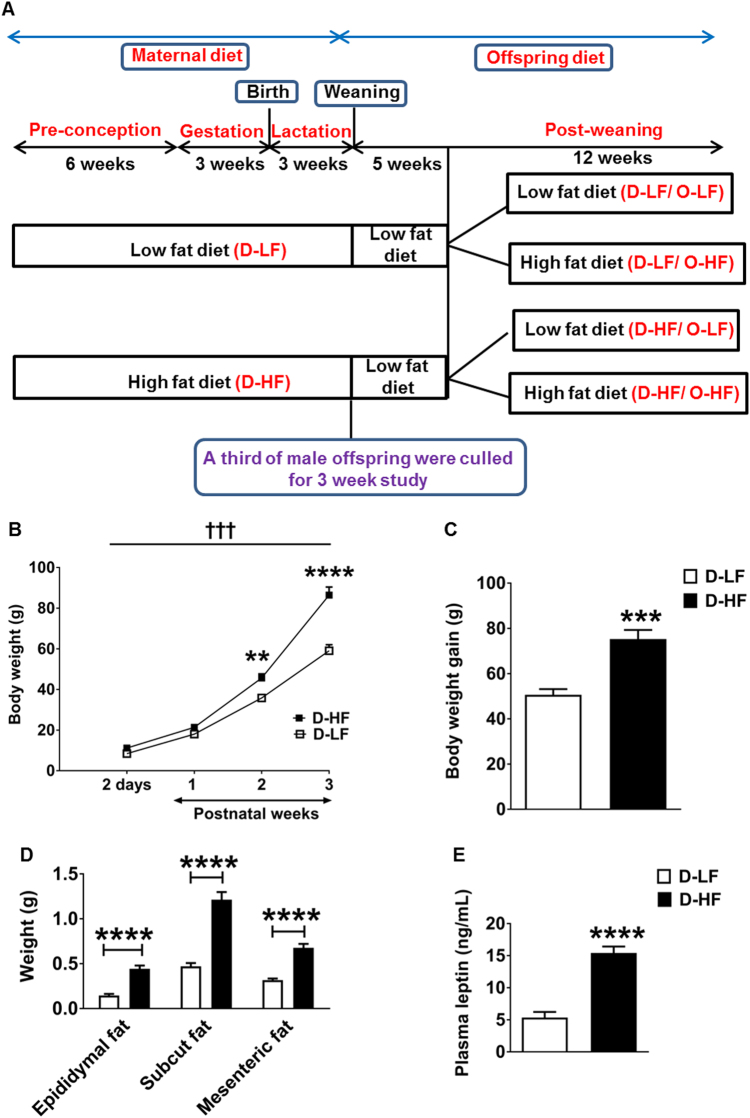Fig. 1.
Obesity in male offspring at weaning: a experimental outline: female Sprague–Dawley rats (Dams) were fed low- (D-LF) or high-fat (D-HF) diet 6 weeks before conception, and throughout gestation and lactation. On postnatal day (PND) 2, the litter size was reduced to n = 10 per dam. On PND 21, one-third of the offspring were culled and the remaining pups from D-HF and D-LF were weaned onto low-fat diet for 5 weeks. At 8 weeks of age, the offspring were divided into groups receiving LF or HF diet until 20 weeks of age. This resulted in four groups of offspring: (1) Dams on LF diet and offspring on LF diet (D-LF/O-LF), (2) Dams on LF diet and offspring on HF diet (D-LF/O-HF), (3) Dams on HF diet and offspring on LF diet (D-HF/O-LF), (4) Dams on HF diet and offspring on HF diet (D-HF/O-HF). b Body weight of male offspring of D-LF or D-HF measured from 2 days to 3 weeks of age (two-way ANOVA with repeated measures: maternal diet effect, †††p < 0.0002; time effect, p < 0.0001; interaction, p < 0.0001: D-LF, n = 6; D-HF, n = 7. Post-hoc Bonferroni **p = 0.0087, ****p < 0.0001). c Total Body weight gain of offspring between birth and 3 weeks of age (Student’s t-test, D-LF, n = 6; D-HF, n = 7, ***p = 0.0004). d Adipose tissue weights of 3-week-old offspring (Student’s t-test, D-LF, n = 22; D-HF, n = 18) and e plasma leptin levels in the offspring recorded at 3 weeks of age (Mann–Whitney U-test, n = 9, ****p < 0.0001, Z = − 3.576, η2 = 0.75). Results are expressed as mean ± SEM.

